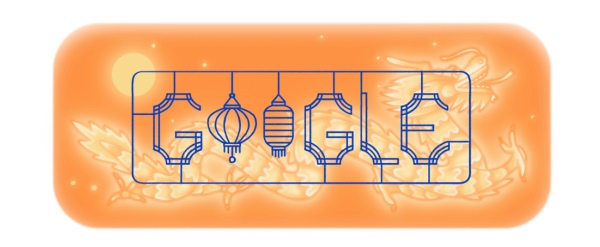Illuminating Traditions: Celebrating the Lantern Festival in 2024
As February 24th arrives, the night sky over Southwest China transforms into a vibrant canvas, painted with the glow of lanterns and the brilliance of fireworks. This marks the celebration of the Lantern Festival, a time-honored tradition commemorating the 15th day of the first lunar month and signaling the official end of the Lunar New Year festivities. In 2024, the Lantern Festival is not only a cultural celebration but also a momentous occasion marked by a special Google Doodle.
A Tapestry of Tradition: Wulong Xuhua Show in Taijiang County
At the heart of the Lantern Festival's celebrations is the Wulong Xuhua show in Taijiang County, Guizhou Province. Rooted in history, this spectacle traces its origins back over 2,000 years to the Han Dynasty. Legend has it that the festival began as a means to guide celestial spirits back to heaven after the Lunar New Year celebrations. Over time, it evolved into a symbol of unity, family, and prosperity. The Wulong Xuhua show adds a unique touch to the festivities. Amid the night sky, lanterns of various shapes and sizes cast a warm glow, creating a mesmerizing atmosphere. The highlight of the event is the traditional dragon dance performed by the Miao ethnic group, accompanied by a display of fireworks. This cultural extravaganza pays homage to ancient traditions while blending seamlessly with the local culture and community spirit.
Kids celebrations 100 years ago in Peking.
— China in Pictures (@tongbingxue) February 24, 2024
Happy 🏮Lantern Festival!
上元节快乐! pic.twitter.com/dXAhtBrRyM
Bridging the Past and Present: Significance of Lanterns and Fireworks
The lanterns and fireworks are not merely decorative elements; they are symbols deeply intertwined with the hopes and aspirations of the people. More than 100 teams actively participate in the dragon dance and fireworks display, signifying the festival's cultural and communal significance. The Lantern Festival is more than a date on the Chinese lunar calendar; it is a celebration of the rich diversity and unity within China. These luminous displays symbolize the wishes for reunion, happiness, and prosperity. The Wulong Xuhua show, in particular, becomes a canvas for the community's collective aspirations and dreams for the year ahead. It merges tradition with contemporary celebration methods, creating an unforgettable experience for both locals and tourists who gather to witness the spectacle.
The Lantern Festival's Global Touch: Google Doodle Tribute
In the digital realm, the Lantern Festival receives a special tribute from Google. The search engine giant marks the occasion with a unique Doodle that encapsulates the essence of this age-old celebration. The Doodle features a vibrant display of lanterns and includes a thoughtful message: “People have celebrated the Lantern Festival for over 2,000 years, but its origin is debated. Many believe the lanterns were first offerings to gods, and another popular legend details how townspeople used them to save their village.” Google's recognition of the Lantern Festival is a testament to the festival's global reach and cultural significance. It acknowledges the diversity of beliefs surrounding the festival's origins, emphasizing its enduring legacy that spans centuries.
How is the Lantern Festival Celebrated?
As dusk falls across cities in Asia, the Lantern Festival springs to life, illuminating the night sky from dusk until the next evening. The celebration involves a myriad of enchanting traditions:
Lantern Festival Beyond Borders: Shantou's International Lantern Show
The Lantern Festival is not confined to a single location; its celebration extends globally. In Shantou, Guangdong Province, the "2024 Shantou International Lantern Show" is held to mark the occasion. The city, known for its large population of returned overseas Chinese, brings a distinctive touch to the festival. The Shantou lantern show is unique in its "international" flair, influenced by the city's history as a centuries-old international port. Creative lantern displays include iconic landmarks such as the Merlion statue in Singapore. These lanterns showcase how the local folk heritage seamlessly blends with the city's character as the "hometown for Chinese people returning from overseas." Local resident Zheng Qiuxing, who returned from Malaysia, attests to the significance of the "Chaoshan tradition" as a guiding light in his heart. For him, folk festivals like these become valuable opportunities to impart the family's cultural roots to his children. The festival in Shantou goes beyond lantern displays, incorporating other folk activities like riddle guessing and Chaoshan Opera. Wu Jialing, an opera performer, highlights how seemingly traditional arts can now engage more young audiences worldwide, thanks to the increasing recognition of local culture. The event attracts a diverse audience, including locals, tourists, and young visitors. Embracing her cultural pride, a young girl named Liang, dressed in her favorite hanfu (traditional Chinese garment), expresses her enthusiasm for participating in such traditional events. The lantern displays at the Shantou Small Park are scheduled to continue until March 15, extending the joyous celebration and providing an opportunity for more people to immerse themselves in the cultural richness of the Lantern Festival.
Conclusion: A Tapestry of Light and Tradition
As the lanterns continue to illuminate the night sky, and the dragon dances weave through the streets, the Lantern Festival of 2024 stands as a testament to the enduring traditions and cultural richness that define China. The blend of ancient customs with contemporary celebrations, the global recognition through platforms like Google, and the diverse expressions of the festival across different regions all contribute to the tapestry of light and tradition. The Lantern Festival is more than a visual spectacle; it's a celebration of unity, family, and the collective aspirations of a community. Whether witnessed in the enchanting Wulong Xuhua show in Taijiang County or the international lantern displays in Shantou, the festival creates a profound and unforgettable experience. It's a time to reflect on.



